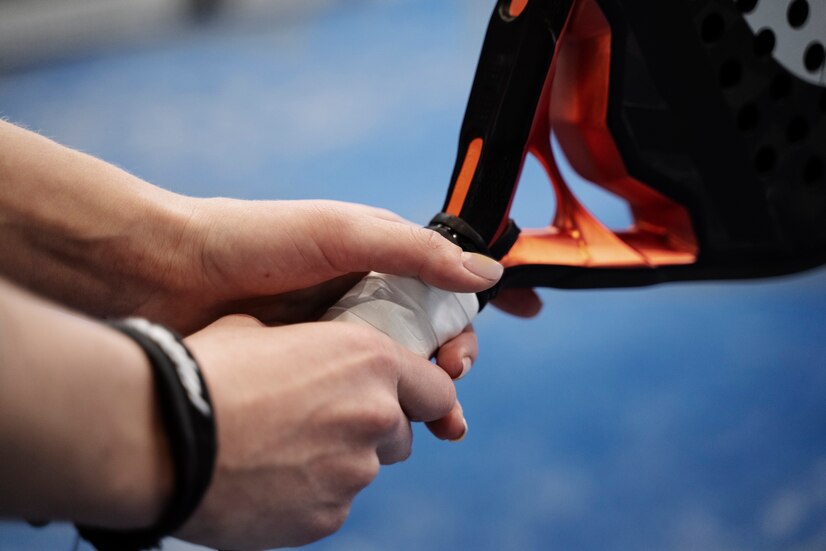To get the most out of padel, it’s essential to know the official rules of the game. In this guide, we will detail the main rules, from the court to the rules of service and common faults. Following these rules not only ensures a better understanding of the game, but also makes it fair and enjoyable for everyone.
Dimensions and characteristics of the padel court
The padel court is a rectangular space surrounded by walls, quite distinct from a tennis or squash court. Here are the main dimensions and characteristics:
- Size: The court is 10 metres wide and 20 metres long.
- Net: The net is 88 cm high in the centre and 92 cm high at the ends.
- Fencing: The walls at the back of the pitch must be 3 metres high, while the sides may vary between 3 and 4 metres.
- Surface: The surface of the pitch may be made of synthetic turf, porous concrete or any other material that encourages fast, flowing play.
Equipment required for padel
To play padel in the best conditions, it’s important to have the right equipment:
- Racquets : Paddle rackets do not have strings, but a solid surface made of composite materials with holes. They should be no more than 45.5 cm long, 26 cm wide and 38 mm thick.
- Balls: Padel balls are similar to tennis balls but have a slightly lower pressure, offering less bounce and longer exchanges.
- Shoes: Shoes must offer good grip and lateral support to ensure fast, safe movement on the playing surface.
Basic rules of padel
Padel is mainly played as a doubles game, although singles play is also possible. Here are the basic rules you need to know:
Start of play and serve
The serve is one of the most important aspects of the game:
- Position: The server must stand behind the service line (about 3 metres from the net).
- Serve: The ball must be hit below the waist and must first bounce off the ground before hitting the opposite wall in the opponent’s service area.
- Fault: If the ball touches the net and falls into the wrong zone, or if it does not cross the net, it is a service fault.
Exchanges and points
This is how rallies are played and how points are scored:
- Exchanges continue until one team makes a mistake (the ball hits the ground twice, goes out of bounds, etc.).
- A point is earned if the opposing team does not return the ball correctly.
- The scoring system is similar to that used in tennis: 15, 30, 40, advantage and play.
Common errors in padel
Understanding fouls is crucial to the smooth running of the game:
- Ball out of bounds: If the ball is hit directly out of bounds, it is a foul.
- Double bounce: The ball must not bounce twice before being returned.
- Contact with the net: Touching the net with the racket or the body during a rally is a fault.
- Interference: Any action that interferes with the opponent (such as shouting or waving) may be considered a foul.
Official standards for padel competitions
Padel competitions follow strict rules to ensure fairness and standardisation:
Match format
Matches are generally played in two winning sets. Each set follows the scoring format of tennis. In the event of a tie at one set all, a third set or super tie-break (10 points) may be played.
Refereeing
Padel tournaments may require one or more referees to ensure that the rules are followed. A main referee oversees the match, while linesmen may be added for high-level competitions.
Player equipment
It is crucial for competitors to wear appropriate, approved clothing. Racquets must comply with specifications and personal accessories (caps, glasses, etc.) must be authorised by the tournament organisers.
Tips for getting started in padel
If you are new to padel, here are a few tips to get you started:
- Take lessons: An experienced coach can help you master the basics of the game more quickly.
- Play regularly: Regular practice is the key to improving your skills.
- Watch the pros: Watching professional matches can provide valuable tips and strategies.
- Invest in the right equipment: A good racket and the right shoes can make all the difference.
By respecting these rules and following these tips, you’ll not only be able to enjoy your padel games more, but also quickly improve your level of play. Whether you’re a beginner or an experienced player, knowing the official standards will help you get the most out of this exciting and fast-growing sport.

